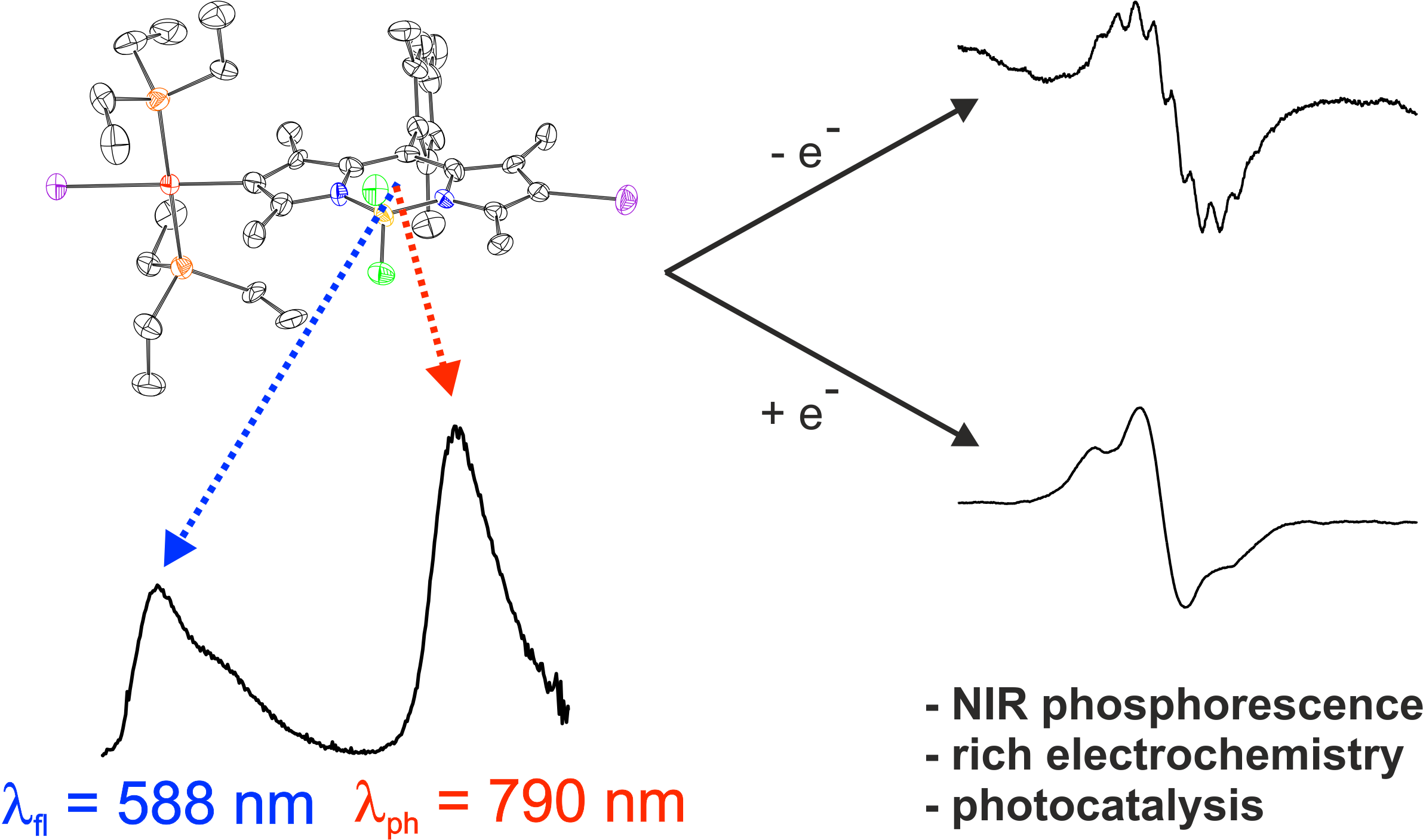
Peter's Paper Online!
"σ-Pt-BODIPY Complexes with Platinum Attachment to Carbon Atoms C2 or C3: Spectroscopic, Structural, and (Spectro)Electrochemical Studies and Photocatalysis"
Peter Irmler and Rainer F. Winter
Organometallics, 2018, 37, 2, 235-253
In this work we discuss five new complexes with the general formula trans-Pt(bodipy)I(PEt3)2, where differently substituted bodipy dyes attach to the coordination center via a direct Pt–C σ-bond to the pyrrolic carbon atom C2 or C3. We also report an isolable intermediate of the oxidative addition step where the bodipy is η2-bonded to the cis-Pt(0)(PEt3)2 moiety. Comparison between the new complexes, meso-platinated analogue 8-Pt, and the parent dyes reveals that the site of platinum attachment influences the spectroscopic, photophysical, electrochemical, and electronic properties. In contrast to 8-Pt, absorption and emission bands are red-shifted with respect to the parent dyes. 2-Platinated bodipy dyes 2-Pt-6H, 2-Pt-6I, 2-Pt-Mes-6I, and 2-Pt-6Et exhibit dual fluorescence and NIR phosphorescence emissions, with low quantum yields, whereas 3-Pt emits solely by fluorescence (ΦFl = 52.7%). The complexes are modestly efficient sensitizers for photochemical 1O2 production but outperform methylene blue. They also undergo one reversible one-electron reduction and oxidation as indicated by cyclic voltammetry. Half-wave potentials are cathodically shifted by 340–510 mV with respect to the parent dyes. The one-electron reduced and some of the one-electron oxidized forms were generated and investigated by UV/vis/NIR and EPR spectroscopy as well as TD-DFT calculations. The similarity of their spectra to those of the one-electron reduced or oxidized forms of other bodipy dyes as well as the richly structured EPR spectra and g-values close to ge attest to a dominant bodipy character of the relevant frontier MOs.
https://doi.org/10.1021/acs.organomet.7b00806
